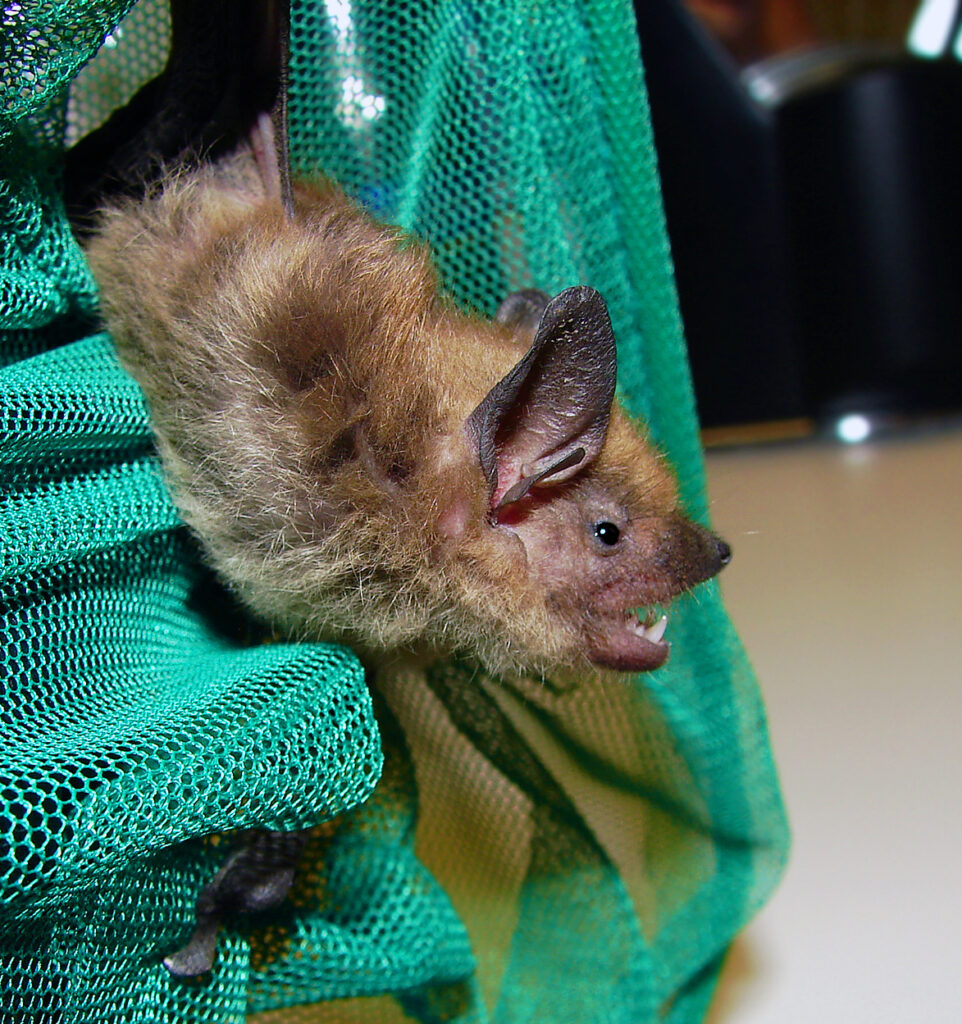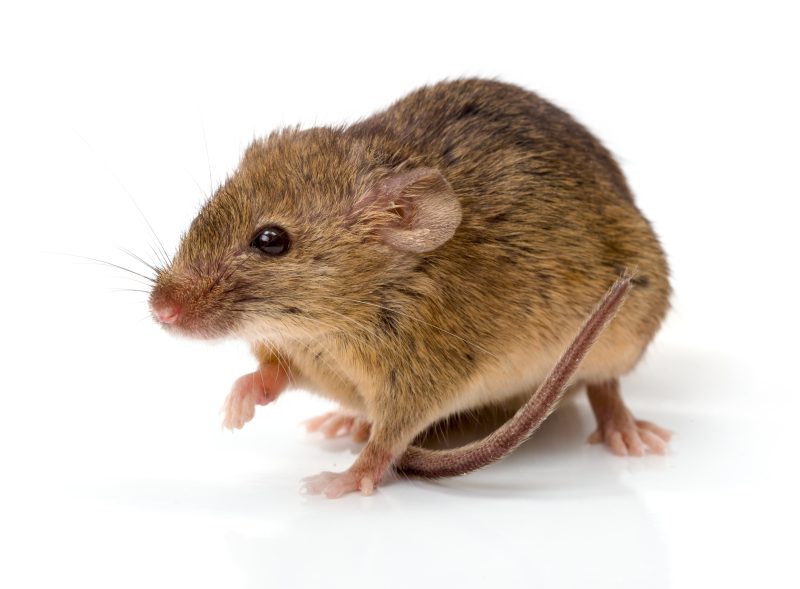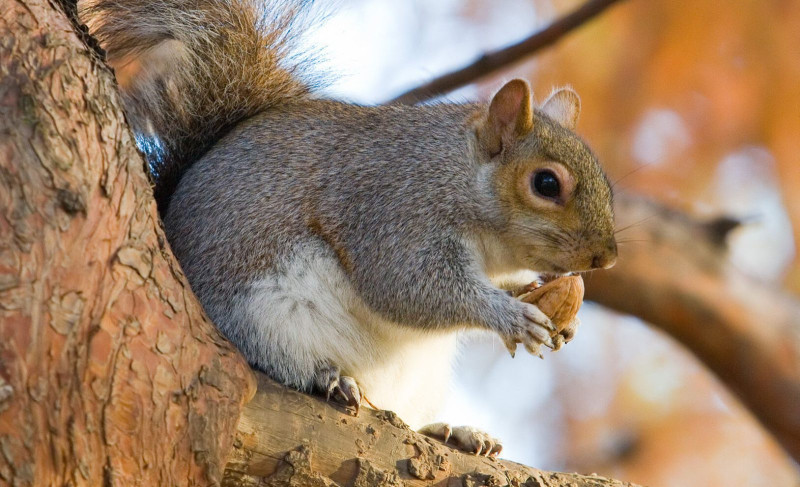As bats go, Big Brown Bats are, well, big. But that’s only in comparison to many other microbats1. As you can see in the photo above, they’re pretty tiny. They aren’t aggressive, won’t bite unless touched, and are a gardener’s friend because they patrol your yard nightly for flying insect pests.
One of the two most widespread bats in the United States, the other being the Little Brown Bat, Myotis lucifugus, Big Brown Bats, Eptesicus fuscus, are 4.5–5.0 inches (11.4–12.7 cm) long, with a wingspan of almost 14 inches (35.6 cm). Adults weigh next to nothing—around 0.5 to 0.75 ounces (14.2–21.3 gm)—and aren’t interested in humans and don’t seek us out or get caught in our hair (contrary to a common myth).

This Big Brown Bat isn’t being aggressive; its mouth is open because it’s echolocating. (Matt Reinbold / Flickr; CC By-SA 2.0)
Big Brown Bats have a large head, large eyes, a broad nose, and ears that are medium-sized and rounded. Their coat is glossy and brown, with shades varying from brown to reddish-brown to chocolate, with a slightly lighter underside. The face and ears are bare. Their tail extends slightly beyond their tail membrane.
Range and habitat
Big Brown Bats originally preferred deciduous forests but have proven themselves adaptable. They now live in nearly every habitat—from forests to meadows to deserts—with no strong preference for feeding near water as many other bat species do. They range from Alaska and central Canada throughout the United States, as far south as northern South America, and the Caribbean.
Behavior
Because they’re insectivores, Big Brown Bats hibernate about half the year, from late fall, when insects become scarce, until spring, when they reappear. Often, the bats change locations from their summer roost to a winter one. They’re loyal to their places of birth and hibernation and return year after year.
In early summer, females form maternity colonies of up to hundreds of individuals. Males are excluded. Because Big Brown Bats are solitary animals, the males will either roost alone or with only a small group of other males.
Food sources
Big Brown Bats rest during daylight hours and take flight just before dusk to begin feeding. But they don’t stay out long—by midnight, they’ve often taken their fill and are back in their roost. They’ll come out in the daytime if they’re sorely in need of water or food. They identify their prey by the sounds made by their wings—flying beetles are a favorite, particularly cucumber beetles.
Roosting
Big Brown Bats roost in such places as hollow trees, storm sewers, rock crevices, and under loose bark—also, sheds, attics, chimneys, under eaves, or even behind shutters. For this reason, they’re among those most likely to be noticed by humans. The only invitation they need is a tiny opening and a promise of darkened, warm surroundings.
Reproduction
The bats mate in the fall before hibernation (it may also occur during periodic awake periods in the winter). The young are born in mid-to-late June when plenty of insects are available as food. The gestation period is about sixty days.
Did you happen to notice that something seems weird about this time frame—like, how can a 60-day gestation deliver the young in June when mating occurred the previous fall? It’s because the female stores the sperm in her body until she awakens from hibernation. Only then does her body ovulate and fertilization take place. (This phenomenon isn’t unique to bats—weasels and seals are among forty-seven other mammalian species that experience it.)
Females form maternity colonies where they have their babies (usually only one). Males are excluded. Mothers leave their babies (pups) together in the roost each night while they head out to eat. They have high energy needs while nursing and will go more than once if necessary. Upon their return, the mothers call out to their pups, who’ll answer. Each mother can identify her offspring’s “voice” and particular scent even in the cluster of dozens or hundreds of other noisy pups.
Life span and predators
Young bats face death by predation from climbing critters, such as snakes and raccoons, that might get into their roost. Once they begin flying, they must learn to avoid owls and falcons. Ignorant of the demands of hibernation, the young bats have a 50 percent chance of dying in their first winter because they didn’t store enough body fat. They may live up to twenty years if they can make it through that challenging first year.
1 A term for the smallest group of bat species, based on size. They measure between 1.6 and 6.3 inches (4.0–16.0 cm) long, compared with “megabats,” which can weigh up to 3.2 pounds (1.45 kg) and have wingspans up to 5.6 feet (1.7 m).





